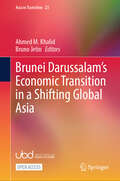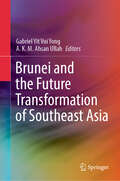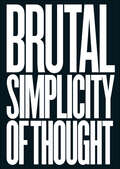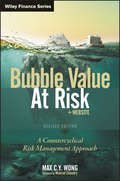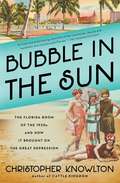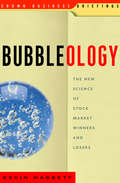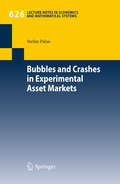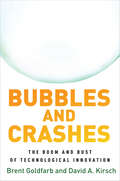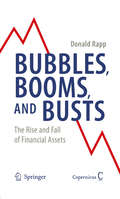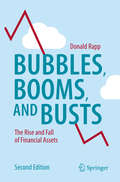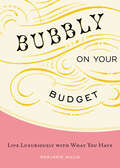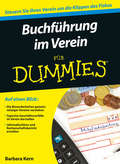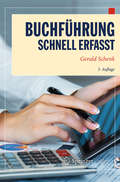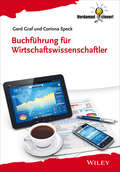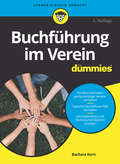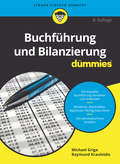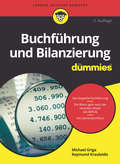- Table View
- List View
Browser Wars--1994-98
by David B. Yoffie Mary KwakAnalyzes the competition between Netscape and Microsoft in the market for Web browsers and related products. Despite its first mover advantage, Netscape sees its market share fall once Microsoft becomes "hard-core" about the Internet. By the spring of 1998, the future of both companies is on the line.
Bruce Allyn: Negotiating with the KGB (A)
by James K. SebeniusIsolated by the KGB in Moscow, Harvard graduate student Bruce Allyn faces high-pressure negotiation tactics to recruit him for the Soviet spy agency. At the tense height of the Cold War, with CIA agents systematically being exposed and executed in Russia, Allyn was participating in an unusual joint U.S.-Soviet study that alternated between the two countries. Going about his doctoral research, meeting and making friends with Russians, he accepted a low-key invitation from a trusted Russian friend to meet for lunch somewhere on the outskirts of Moscow. After hours of warm conversation, great food, and endless alcohol with a group of Russians, all but one of this group drifted out of the room. Suddenly the sole remaining man, "Vladimir," looked straight at Bruce and stated: "I am a high-ranking KGB officer. I have been commissioned to make to you a proposal." Drunk, isolated, and highly vulnerable, Allyn must negotiate with this sophisticated KGB counterpart. To recruit Allyn to secretly work for the KGB, the agent tries many approaches: barely veiled threats, offers of money, and the promise of high level access and Soviet documents that would enable Allyn over time to become the top U.S. Sovietologist. Should Allyn accept the offer, the agent stresses how Allyn could have a much better life and far more effectively advance the shared goals of reducing the risks of nuclear war and improving relations between the two hostile superpowers. Allyn must figure out what to do.
Brunei Darussalam’s Economic Transition in a Shifting Global Asia (Asia in Transition #23)
by Bruno Jetin Ahmed M. KhalidThis is an Open Access book. The international political economy is confronted by a number of overlapping crises. These include the climate emergency, rapid technological advancement, the high volume of globalised trade and financial flows, cross-border labour movement, rising inequality, geopolitical tensions, and frequent economic crises and natural disasters. Many developing countries are going through a period of urgent transformation and transition to adopt new policies to cope with such challenges and achieve and maintain sustainable and inclusive socioeconomic development. This path-breaking volume explores the issues shaping the response of Brunei Darussalam, long dependent on its oil and gas sector, to these challenges. The discussions presented here are framed by the notion of ‘development in transition’—a mix of well-designed policies driven by timely implementation, enforcement and monitoring, as well as international cooperation to ensure sustainable development and distribution of benefits on an equitable basis. Through fine-grained analyses of key economic sectors—including natural resources, employment patterns, financial services, global value chains, international trade, tourism and the role of the public sector—the contributors offer a critical assessment of Brunei’s policy responses. This transitional policy mix is situated in relation to the overarching development strategy called Wawasan Brunei 2035 (Brunei Vision 2035), which broadly maps onto the United Nations 2030 Agenda for Sustainable Development Goals. Academic scholars, university students and others interested in the study of contemporary Brunei and broader questions of economic transition in Asia will find this volume an invaluable resource for a deeper understanding of how development paths and priorities are being managed to meet pressing global and local challenges.
Brunei and the Future Transformation of Southeast Asia
by Gabriel Yit Vui Yong A.K.M. Ahsan UllahThis book adopts an interdisciplinary approach, drawing on contributions from experts in various fields such as geography, environmental and developmental studies, to provide a comprehensive analysis of Brunei's role within Southeast Asia's future trajectory. Brunei has often been overlooked, or given only cursory coverage in regional analyses, and so this book affords significant attention to the Bruneian perspective on regional development. By integrating Brunei's unique historical, geographical and socio-economic context into the broader discussion, the book offers insights into how Brunei's aspirations and challenges contribute to shaping the region's future. By emphasizing local-regional transformation and resilience, the book provides practical insights into how Brunei and other Southeast Asian nations can navigate uncertainties—adapting to global challenges such as climate change, economic shifts, and geopolitical dynamics—and seize opportunities in the coming decades. It is relevant to social scientists across disciplines focused on Southeast Asia, and in the Muslim world's role in development.
Brush with AIDS (A)
by Joseph L. Badaracco Jr. Jerry UseemA product manager at a health products company is responsible for marketing sharps containers, which hospitals use to store used needles in order to protect medical workers from being pricked with AIDS-contaminated needles. After hospitals report repeated instances of needles penetrating the container walls, she realizes the defective product poses a health hazard for medical workers. The product manager must decide whether or not to fix the containers when doing so would significantly decrease her profit performance for the year. The company mission statement stresses quality commitment to customers, but all compensation and advancement incentives are geared solely toward profit objectives.
Brutal Simplicity of Thought
by M&C SaatchiThe principles of creativity in stunningly simple words and pictures by the man behind the world's most successful advertising agencyHow did two wheels emancipate women? How can a pie save thousands of lives? How can a useless piece of fabric determine social status? How can you make night day?Simplicity looks easy. It's not. It's easier to complicate than simplify. This book presents deceptively simple examples of concepts that have changed the world—from the single piece of paper that became the American Declaration of Independence, giving birth to the most powerful nation in the history of the world, to the symbol and line that enable us to write music. Thought-provoking and incisive, Brutal Simplicity of Thought is the distillation, in words and pictures, of the Saatchi method of creativity. This book started life as a training manual for Saatchi advertising employees, and its approach has shaped the Saatchistory for forty years. Its principles permeate the culture, philosophy and structure of one of the world's best known corporate brands. Whether you are a student, an artist, a manager, self-employed or a CEO, this book has something to teach us all: simplicity rules.
Bs25999
by Tony DrewittThis book furnishes readers with an understanding of the basics of business continuity, including: a definition of what business continuity means; how managing operational business continuity risk can be achieved using an approach increasingly recognised world-wide; the important distinction between operational, commercial and strategic risks in business; the role played by operational resilience measures, business continuity strategies and planning in managing operational risks; how to demonstrate some form of return on investment in a business continuity management system (BCMS); and, the role of business continuity in corporate governance and how to develop a mechanism that provides directors and stakeholders with appropriate assurance about the management and control of business continuity risks. Corporate bodies will find this book useful at a number of stages in any business continuity project, including: at the decision-making stage, project initiation stage, and, as part of an ongoing awareness campaign, being made available to all staff and to new starters as part of their introduction to the company.
Bubble Value at Risk
by Max C. WongIntroduces a powerful new approach to financial risk modeling with proven strategies for its real-world applicationsThe 2008 credit crisis did much to debunk the much touted powers of Value at Risk (VaR) as a risk metric. Unlike most authors on VaR who focus on what it can do, in this book the author looks at what it cannot. In clear, accessible prose, finance practitioners, Max Wong, describes the VaR measure and what it was meant to do, then explores its various failures in the real world of crisis risk management. More importantly, he lays out a revolutionary new method of measuring risks, Bubble Value at Risk, that is countercyclical and offers a well-tested buffer against market crashes.Describes Bubble VaR, a more macro-prudential risk measure proven to avoid the limitations of VaR and by providing a more accurate risk exposure estimation over market cyclesMakes a strong case that analysts and risk managers need to unlearn our existing "science" of risk measurement and discover more robust approaches to calculating risk capitalIllustrates every key concept or formula with an abundance of practical, numerical examples, most of them provided in interactive Excel spreadsheetsFeatures numerous real-world applications, throughout, based on the author's firsthand experience as a veteran financial risk analyst
Bubble in the Sun: The Florida Boom of the 1920s and How It Brought on the Great Depression
by Christopher KnowltonChristopher Knowlton, author of Cattle Kingdom and former Fortune writer, takes an in-depth look at the spectacular Florida land boom of the 1920s and shows how it led directly to the Great Depression. <P><P>The 1920s in Florida was a time of incredible excess, immense wealth, and precipitous collapse. The decade there produced the largest human migration in American history, far exceeding the settlement of the West, as millions flocked to the grand hotels and the new cities that rose rapidly from the teeming wetlands. The boom spawned a new subdivision civilization—and the most egregious large-scale assault on the environment in the name of &“progress.&” Nowhere was the glitz and froth of the Roaring Twenties more excessive than in Florida. Here was Vegas before there was a Vegas: gambling was condoned and so was drinking, since prohibition was not enforced. Tycoons, crooks, and celebrities arrived en masse to promote or exploit this new and dazzling American frontier in the sunshine. Yet, the import and deep impact of these historical events have never been explored thoroughly until now. In Bubble in the Sun Christopher Knowlton examines the grand artistic and entrepreneurial visions behind Coral Gables, Boca Raton, Miami Beach, and other storied sites, as well as the darker side of the frenzy. <P><P>For while giant fortunes were being made and lost and the nightlife raged more raucously than anywhere else, the pure beauty of the Everglades suffered wanton ruination and the workers, mostly black, who built and maintained the boom, endured grievous abuses. Knowlton breathes dynamic life into the forces that made and wrecked Florida during the decade: the real estate moguls Carl Fisher, George Merrick, and Addison Mizner, and the once-in-a-century hurricane whose aftermath triggered the stock market crash. This essential account is a revelatory—and riveting—history of an era that still affects our country today.
Bubbleology
by Kevin HassettThere are only two types of stocks: those safe from bubbles and those that are not. This is a fact of investing many discovered as they saw their fabulous gains whittled away by the extreme calamity of the Internet sector. But what about the future? Is there a way for investors to capture the enormous potential for profit that exists at the frontier of the economy, the place where innovation and genius operate, without placing their fortunes in jeopardy? Is there a way to evaluate price increases--and declines--and identify whether they are happening for good or bad reasons? Bubbleology makes it possible to separate the winners from the losers. It is a brilliant, practical, and original analysis of the stock market that bashes the conventional wisdom about bubbles, showing that such famous examples as Tulipomania were not, in fact, bubbles at all. Bubbleology shows that the traditional way of evaluating risk--equating it with volatility--is inherently flawed and incomplete. If a stock fluctuates a lot in price it is regarded as risky. If the price is stable, then it is not. What this simplistic way of thinking leaves out is the simple fact that companies trying something completely new that may fundamentally alter the economic landscape are operating at the frontier. The stock of such a company swims in a sea of ambiguity, its circumstances uncertain, since there is little to provide guidance about the future. But when nobody knows for sure what will happen, pundits tell us again about Tulipomania, the South Seas Bubble, and now the debacle of the Internet to scare investors away from potentially enormous profits. To realize those profits, however, investors have to understand the role that uncertainty and ambiguity--the absence of reliable information about future events--play in the modern stock market. Those who equate ambiguity with bubbles will miss the great opportunities of the future.Bubbleology provides a new way to observe what is really going on in the market, enabling you to understand whether a stock or a sector is suspicious--whether it is in a bubble and therefore something to be avoided. Finding bubbles requires knowing where to look and what to look for. Bubbleology will help you avoid both streaming into speculative manias and shying away from perfectly good business opportunities. It tells you why you need to avoid both pontificating pundits and overconfident stock analysts. With this unique and forward-thinking book, you can inspect suspicious stocks, accurately discern risk, and diagnose a blossoming bubble before it vanishes along with your money.From the Hardcover edition.
Bubbles and Contagion in Financial Markets, Volume 2: Models and Mathematics
by Eva R. PorrasThis book focuses on extending the models and theories (from a mathematical/statistical point of view) which were introduced in the first volume to a more technical level. Where volume I provided an introduction to the mathematics of bubbles and contagion, volume II digs far more deeply and widely into the modeling aspects.
Bubbles and Crashes in Experimental Asset Markets (Lecture Notes in Economics and Mathematical Systems #626)
by Stefan PalanThis book describes a laboratory experiment designed to test the causes and properties of bubbles in financial markets and explores the question whether it is possible to design markets which avoid such bubbles and crashes. In the experiment, subjects were given the opportunity to trade in a stock market modeled after the seminal work of Smith et al. (1988). To account for the increasing importance of online betting sites, subjects were also allowed to trade in a digital option market. The outcomes shed new light on how subjects form and update their expectations, placing special emphasis on the bounded rationality of investors. Various analytical bubble measures found in the literature are collected, calculated, classified and presented for the first time. The very interesting new bubble measures "Dispersion Ratio", "Overpriced Transactions" and "Underpriced Transactions" are developed, making the book an important step towards the research goal of preventing bubbles and crashes in financial markets.
Bubbles and Crashes: The Boom and Bust of Technological Innovation
by David A. Kirsch Brent GoldfarbFinancial market bubbles are recurring, often painful, reminders of the costs and benefits of capitalism. While many books have studied financial manias and crises, most fail to compare times of turmoil with times of stability. In Bubbles and Crashes, Brent Goldfarb and David A. Kirsch give us new insights into the causes of speculative booms and busts. They identify a class of assets—major technological innovations—that can, but does not necessarily, produce bubbles. This methodological twist is essential: Only by comparing similar events that sometimes lead to booms and busts can we ascertain the root causes of bubbles. Using a sample of eighty-eight technologies spanning 150 years, Goldfarb and Kirsch find that four factors play a key role in these episodes: the degree of uncertainty surrounding a particular innovation, the attentive presence of novice investors, the opportunity to directly invest in companies that specialize in the technology, and whether or not a technology is a good protagonist in a narrative. Goldfarb and Kirsch consider the implications of their analysis for technology bubbles that may be in the works today, offer tools for investors to identify whether a bubble is happening, and propose policy measures that may mitigate the risks associated with future speculative episodes.
Bubbles, Booms, and Busts: The Rise and Fall of Financial Assets
by Donald RappThis book provides a thorough explanation of the nature and history of booms, bubbles and busts in financial markets. The first part of the book deals with financial booms and bubbles and how they emerge, develop and collapse. It describes the distribution of wealth, inflation, rationality of bankers, monetary and fiscal policy, the role of central banks, tax policies, social security, US federal, state, municipal and personal debt, and valuation of common stocks. The book describes historical boom/bust cycles including bubbles of the 1720s, the Florida land boom and the stock market in the 1920s, the depression of the 1930s, the S&L scandal of the 1980s, the great bull market of 1982-1995, the crash of 1987, the dot.com mania of 1995-2000, corporate swindles of the 1990s and 2000s, the sub-prime fiasco of the 2000s, and Japan in the late 20th century. Most of the recent wealth generation has derived from increased debt and appreciation of paper assets. The architects of the new economics were Ronald Reagan and Arthur Greenspan. Inevitably, the US Government's cure for excessive spending and inadequate revenues is to increase spending and cut revenues. American voters must choose between "tax and spend" Democrats and "spend and borrow" Republicans. The theme of American finance was uttered by VP Cheney: "Deficits don't matter".
Bubbles, Booms, and Busts: The Rise and Fall of Financial Assets
by Donald RappThis book deals at some length with the question: Since there are many more poor than rich, why don’t the poor just tax the rich heavily and reduce the inequality? In the 19th century and the first half of the 20th century, the topic of inequality was discussed widely. Ending or reducing inequality was a prime motivating factor in the emergence of communism and socialism. The book discusses why later in the 20th century, inequality has faded out as an issue. Extensive tables and graphs of data are presented showing the extent of inequality in America, as well as globally. It is shown that a combination of low taxes on capital gains contributed to a series of real estate and stock bubbles that provided great wealth to the top tiers, while real income for average workers stagnated. Improved commercial efficiency due to computers, electronics, the Internet and fast transport allowed production and distribution with fewer workers, just as the advent of electrification, mechanization, production lines, vehicles and trains in the 1920s and 1930s produced the same stagnating effect.
Bubbly on Your Budget: Live Luxuriously with What You Have
by Marjorie HillisBubbly on Your Budget is an effervescent guide to living on a budget without sacrificing style. First published in 1937, these tips stand the test of time. Author Marjorie Hillis proves that it isn't how much we have, but how we act, that matters. With a charming can-do attitude she offers hundreds of creative solutions, including creating the perfect capsule wardrobe, dining out for brunch rather than dinner, and setting aside a budget for miscellaneous (this is where the bubbly fits in!) each month. Brimming with vintage line illustrations, this delightful book shows that being smart about money and living life to the fullest never goes out of style.
Buchfuhrung im Verein fur Dummies (Für Dummies)
by Barbara KernVon AfA bis Zweckbetrieb – alles, was Sie für die Vereinsbuchführung wissen müssen Wie unterscheidet sich die Vermietung von Sportanlagen an Mitglieder von der an Nichtmitglieder? Wann muss ein gemeinnütziger Verein Steuern zahlen? Wer ehrenamtlich im Verein tätig ist, weiß, dass die Buchführung für Laien ganz schön kompliziert sein kann. Und Schatzmeister oder Kassenwarte sind eben meist keine Profis. Leicht verständlich und anhand vieler Beispiele bringt Barbara Kern Licht ins Dunkel. Sie vermittelt Ihnen das Grundlagenwerkzeug und begleitet Sie dann in die Praxis der Vereinsbuchführung. Sie erfahren alles über die Zuordnung von Einnahmen und Ausgaben und das besondere Steuerrecht für Vereine. So bleiben GoB, KSt, ErbSt, SchenkSt, GrdSt, USt und GewErtSt für Sie kein Buch mit sieben Siegeln. Damit sind Sie bestens für die Erstellung des Jahresabschlusses sowie der Rechenschaftsberichte für die Mitgliederversammlung und das Finanzamt gerüstet.
Buchführung - Schnell erfasst (Wirtschaft – Schnell erfasst)
by Gerald SchenkDer leicht verständliche Einstieg in die Buchführung: Anhand zahlreicher praktischer Beispiele stellt der Autor das System der doppelten Buchführung vor. Besonders verständlich und übersichtlich erläutert er die Buchungstechnik für die wichtigsten Geschäftsvorfälle in Unternehmen. Er legt großen Wert auf die Zusammenhänge zwischen Buchführung und Bilanz, die für das Verständnis entscheidend sind. Zusätzlich gibt er einen Überblick über die handels- und steuerrechtlichen Vorschriften zur Führung von Büchern sowie die Grundsätze ordnungsgemäßer Buchführung. Tipps für Haus- und Abschlussarbeiten im Web ergänzen diese 2., aktualisierte Auflage.
Buchführung für Wirtschaftswissenschaftler (Verdammt clever!)
by Gerd Graf Corinna SpeckKompakt und »verdammt clever« auf den Punkt gebracht – Buchführung – das ist trocken und langweilig – und kann einem schon mal den Spaß am Studium verhageln. Doch Sie haben die Lösung für Ihre Probleme schon in der Hand! Mit diesem Buch können Sie als BWLer oder VWLer die »langweilige« Buchführungspielerisch erlernen und so auch noch bei trockenen Themen wie Inventur, Kontenarten, Bilanz, Gewinn- und Verlustrechnung und sogar Umsatzsteuergutgelaunt bleiben. Buchführung für Wirtschaftswissenschaftler bietet Ihnen viele unterschiedliche Aufgabentypen (bspw. Multiple Choice, offene Fragen, Rechen- und Buchungsaufgaben), die das Erlernen des »verstaubten« Stoffes kurzweilig machen. Der schnelle Lernerfolg wird durch die Lernkontrolle (für alle Aufgaben sind die Lösungen enthalten) sofort sichtbar und sorgt für beste Laune in der Vorlesung, WG, Mensa oder auf der Studentenparty. Auch für angehende Wirtschaftsinformatiker, -juristen, -ingenieure, -mathematiker, -pädagogen, -soziologen, -psychologen und andere ist dieses Lehrbuch bestens geeignet. Viel Spaß beim Lernen!
Buchführung im Verein für Dummies (Für Dummies)
by Barbara KernWer ehrenamtlich im Verein tätig ist, weiß, dass die Buchführung für Laien ganz schön kompliziert sein kann. Leicht verständlich und anhand vieler Beispiele bringt Barbara Kern Licht ins Dunkel. Sie vermittelt Ihnen das Grundlagenwerkzeug und begleitet Sie dann in die Praxis der Vereinsbuchführung. Sie erfahren alles über die Zuordnung von Einnahmen und Ausgaben und das besondere Steuerecht für Vereine. So bleiben KSt, ErbSt, SchenkSt, GrdSt, USt und GewErtSt für Sie kein Buch mit siebenSiegeln und Sie sind bestens gerüstet für die Erstellung des Jahresabschlusses und von Rechenschaftsberichten für die Mitgliederversammlung und das Finanzamt.
Buchführung intensiv
by Karin NickenigUnterschiedlich schwierige Geschäftsvorfälle und einfache bis komplexe Buchungssachverhalte werden unter Berücksichtigung der gesetzlichen Grundlagen anschaulich erklärt und anschließend gebucht. Das Lehrbuch richtet sich an Praktiker im kaufmännischen Bereich und an Studierende. Zahlreiche Beispiele, Wiederholungsfragen, Aufgaben mit Lösungen und fünf Übungsklausuren vertiefen und sichern den Lernerfolg.
Buchführung intensiv: Buchungsfälle von leicht bis schwer schnell und korrekt erfassen
by Karin NickenigUnterschiedlich schwierige Geschäftsvorfälle und einfache bis komplexe Buchungssachverhalte werden unter Berücksichtigung der gesetzlichen Grundlagen anschaulich erklärt und anschließend gebucht. Das Lehrbuch richtet sich an Praktiker im kaufmännischen Bereich und an Studierende. Zahlreiche Beispiele, Wiederholungsfragen, Aufgaben mit Lösungen und fünf Übungsklausuren vertiefen und sichern den Lernerfolg. Die vorliegende zweite Auflage wurde gründlich durchgesehen.
Buchführung intensiv: Buchungsfälle von leicht bis schwer schnell und korrekt erfassen
by Karin NickenigUnterschiedlich schwierige Geschäftsvorfälle und einfache bis komplexe Buchungssachverhalte werden unter Berücksichtigung der gesetzlichen Grundlagen anschaulich erklärt und anschließend gebucht. Das Lehrbuch richtet sich an Praktiker im kaufmännischen Bereich und an Studierende. Zahlreiche Beispiele, Wiederholungsfragen, Aufgaben mit Lösungen und fünf Übungsklausuren vertiefen und sichern den Lernerfolg. Die aktualisierte 3. Auflage wurde inhaltlich optimiert und auf den Rechtsstand Sommer 2019 gebracht.
Buchführung und Bilanzierung für Dummies (Für Dummies)
by Michael Griga Raymund Krauleidis»Buchführung und Bilanzierung für Dummies« behandelt die Finanzbuchhaltung mit Inventur, Bilanz und Gewinn-und-Verlust-Rechnung. Es ist eine gut lesbare Einführung in dieses vermeintlich so trockene Thema und bringt mit der nötigen Prise Humor und anschaulichen Beispielen Leben in die Zahlen. Sie erfahren, was sich hinter solch geheimnisvollen Begriffen wie Rückstellung, Abschreibung oder Bewertung verbirgt und welche Gesetze es in Deutschland, in der Schweiz und in Österreich gibt.
Buchführung und Bilanzierung für Dummies (Für Dummies)
by Michael Griga Raymund Krauleidis»Buchführung und Bilanzierung für Dummies« behandelt die Finanzbuchhaltung mit Inventur, Bilanz und Gewinn-und-Verlust-Rechnung. Es ist eine gut lesbare Einführung in dieses vermeintlich so trockene Thema und bringt mit der nötigen Prise Humor und anschaulichen Beispielen Leben in die Zahlen. Sie erfahren, was sich hinter solch geheimnisvollen Begriffen wie Rückstellung, Abschreibung oder Bewertung verbirgt und welche Gesetze es in Deutschland, in der Schweiz, in Österreich und dem Rest der Welt gibt.

